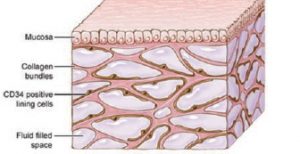Uncover 10 impressive new inventions that are sure to change our lives.
With each lap the Earth takes around the sun, a whole lot happens down here on the planet’s surface. And 2018, as predicted, catapulted us into a science-fictional future with the creation of plenty of mindboggling inventions. Check them out:
By Deboshree Banerjee
1. CANCER VACCINES
2. IMPROVING HUMAN MEMORY UP TO 15 PERCENT
In recent years, scientists in the field of neurotechnology have been on a mission to unlock the human brain. And guess what? Their attempt to create a brain implant that improves cognitive function is the closest they have come to meeting their goal. It might also be the closest researchers have come to making these technologies available to the public. The pacemaker, funded by the US Department of Defense, operates through deep-brain stimulation created by electrical pulses, and is capable of boosting the memory of those who suff er from epilepsy, Parkinson’s and Alzheimer’s disease.
3. THE DISCOVERY OF THE LARGEST ANIMAL ON EARTH: A 26,000 POUND DINOSAUR
A majestic addition to the Jurassic period! Researchers in South Africa revealed a new relative of the brontosaurus, called Ledumahadi mafube, which is Sesotho for “a giant thunderclap at dawn.” Scientists are now convinced that this dinosaur was one of the largest animals on Earth during the early days of the planet’s existence, about 200 million years ago. The dinosaur would have weighed about 26,000 pounds, equivalent to the size of two African elephants, and is believed to have been a herbivore.
4. WATER FOUND ON MARS
Care to take a dip on Mars? For decades, scientists have been chasing after evidence of water on this planet, which many believe will one day serve as a refuge for humanity. Researchers from The Italian Space Agency reportedly found a lake deep beneath the Red Planet’s polar ice caps using a ground-penetrating radar. While it is known that the planet has substantial ice deposits, scientists weren’t able to confirm the presence of water until July. Early hypotheses also stated that the lake was likely too cold and salty to sustain any sort of life, but findings from the discovery have reignited speculation about the planet’s geology and potential for human existence.
5. FOUNTAIN OF YOUTH: REVERSING THE AGEING PROCESS
It appears that our search for longer life is coming to an end. In March, researchers of Harvard Medical School published a study which found the possibility for reversing the age of mice. During their investigation, they identified a gene associated with the growth of new blood vessels, and manipulated DNA activity. The team hopes to do the same experiment with human subjects, and if successful, they plan to develop dietary supplements that could slow down the clock and prevent age-related diseases like Alzheimer’s and cancer.
6. MALE BIRTH CONTROL
New studies on a proposed male contraceptive pill by researchers from the University of Washington have shown promising results. The university’s experimental male oral contraceptive is taken once a day and acts upon male sex hormones, such as testosterone. The pill, called dimethandrolone undecanoate (DMAU), reduces hormone production to levels that are low enough to suppress sperm stimulation. However, more examination is required before the pill can be considered viable for the market.
7. NEEDLE-FREE INJECTIONS
Say goodbye to scary shots! Portal Instruments, a start-up operating out of Massachusetts Institute of Technology, have developed a needle-free, digitally controlled jet injection device called PRIME. Designed to eject a high-pressure stream of medication into the skin, the device allows it to reach the bloodstream without using a needle. Lucky for those with an intense phobia of injections, PRIME is almost ready to hit the market.
8. MEDICINAL CONTACTLENSES
Created by researchers at Harvard Medical School, Theraoptix is a new contact lens that slowly releases medication while worn. They may be used to treat a variety of ocular ailments, including glaucoma, and can even aid in recovery after surgery. Made from FDA-approved materials, Theraoptix delivers eye medication in a controlled, sustained release. In between the contact materials is a tiny drug-filled polymer film that doesn’t interfere with your vision. The lenses can be worn all day for up to two weeks, and are a far more effective method of treatment compared to eye drops, with their drip-free medication application.
9. A NEW ORGAN IN THE HUMAN BODY
Anatomy just got a little more complicated. Researchers from NYU School of Medicine believe that they’ve discovered a new organ called the interstitium. This was previously believed to be made of dense layers of tissue, but new research suggests that the tissue bundles are actually a network of tiny, fluid-filled channels in the human body. This discovery has the potential to be a major game changer for modern medicine.
10. WARM-BLOODED FISH
Scientists have discovered fish that — despite what we are taught at school — are fully warm-blooded. These large, deep-sea fish known as opah have been a staple in seafood markets for years, but only this year was it revealed that they are actually warm-blooded. Research reports show that opah fish have a high body temperature and a warm heart, allowing them to move faster to catch prey and evade predators.















